Fall Lawn Care Tips
Well, the weather has definitely felt more like fall here in Kentucky! And I am loving every minute of it! I’m am antsy to go to my first pumpkin patch with the kids and get some kettle corn at the Fall festivals. :). Don’t ya love it?!
With all the fun that fall brings, we sometimes forget about something really important we need to do…take care of our fall lawn. We haven’t always been good about remembering to care for our lawn in the fall, but when we do, we are so thankful when Spring rolls around! There is nothing more beautiful that a lush lawn!
We have some bare spots in our lawn that needed some seeding, and Sania wanted to help us. This is a great project to do together as a family!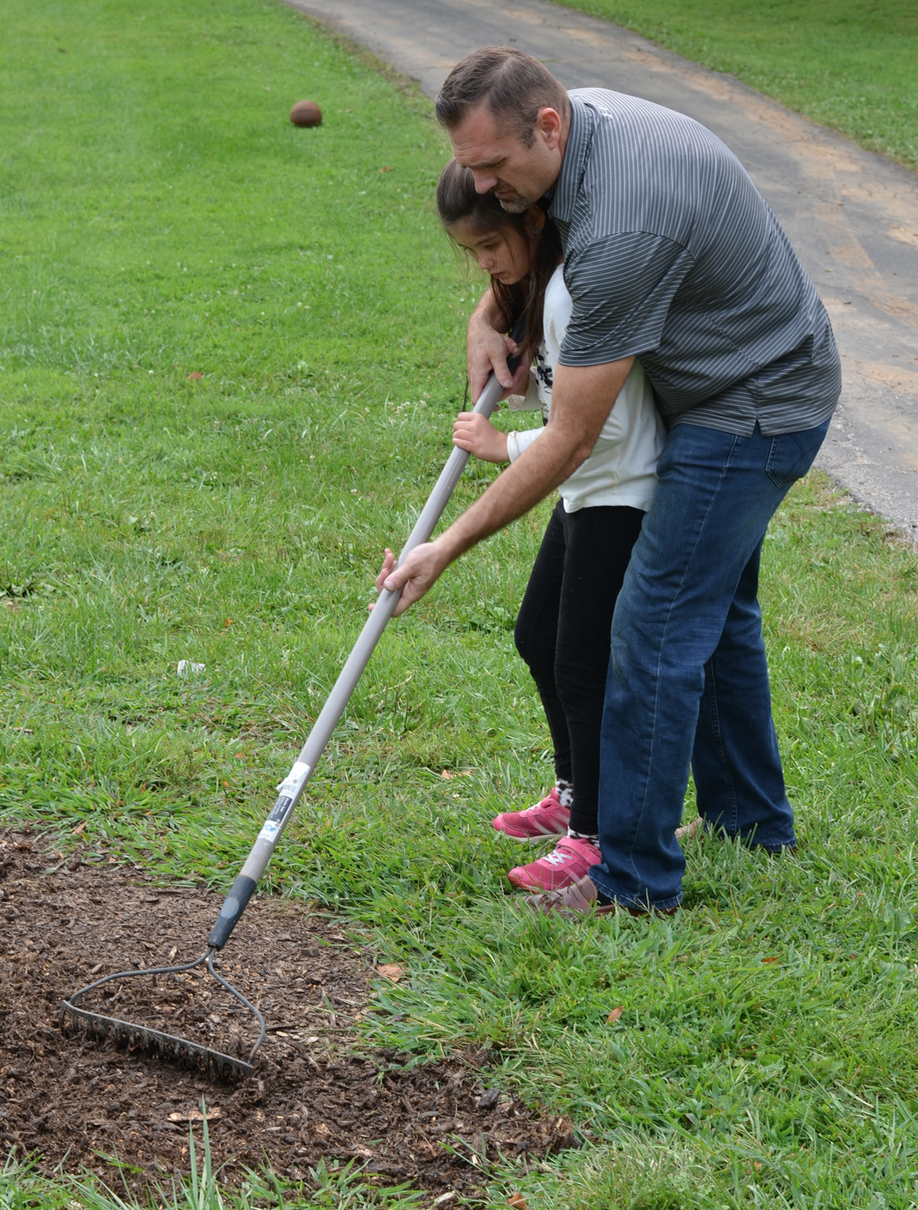
The rake was a little heavy at first, but she still thought it was fun. :)
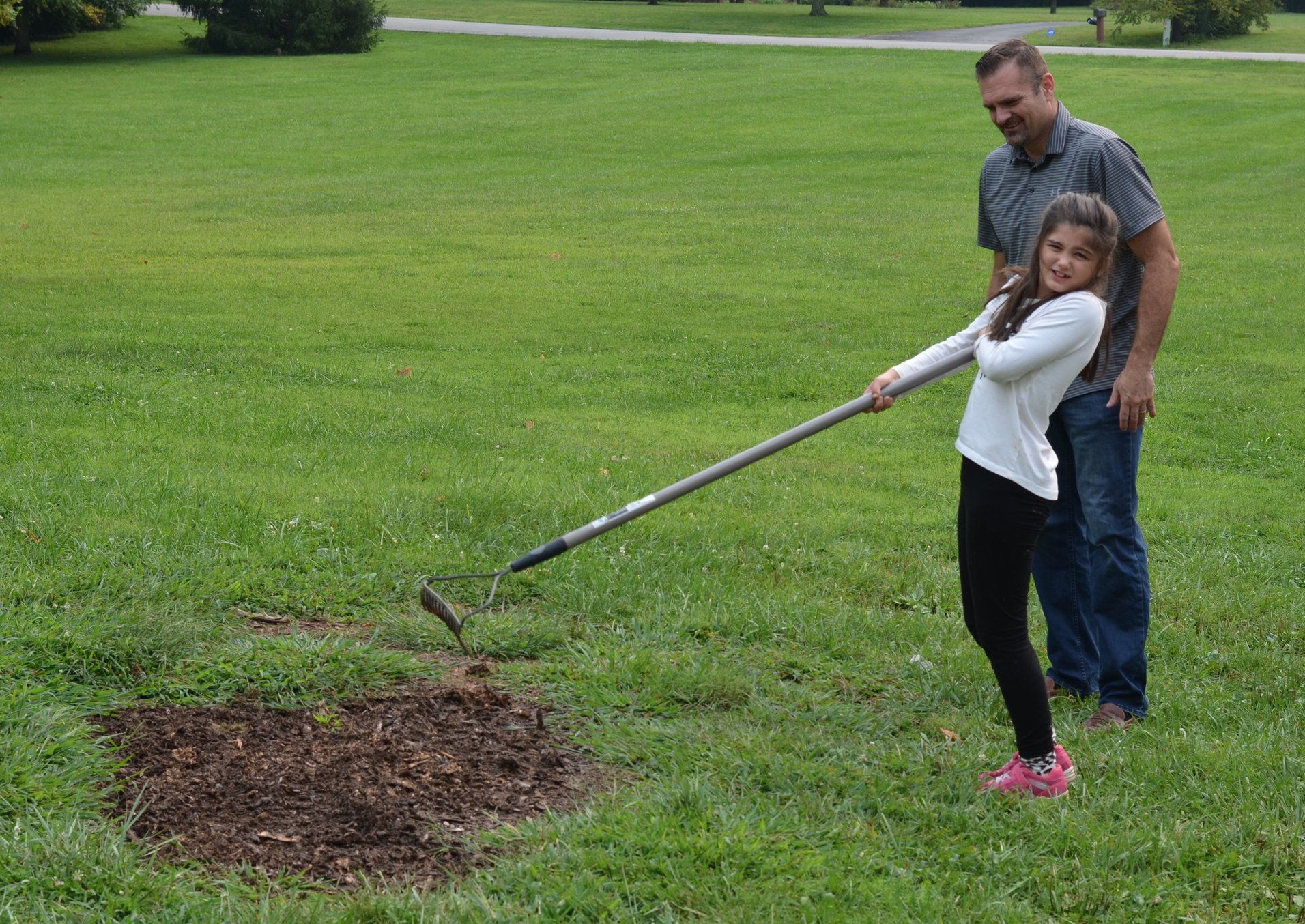
Very quickly, she started to get the hang of it.
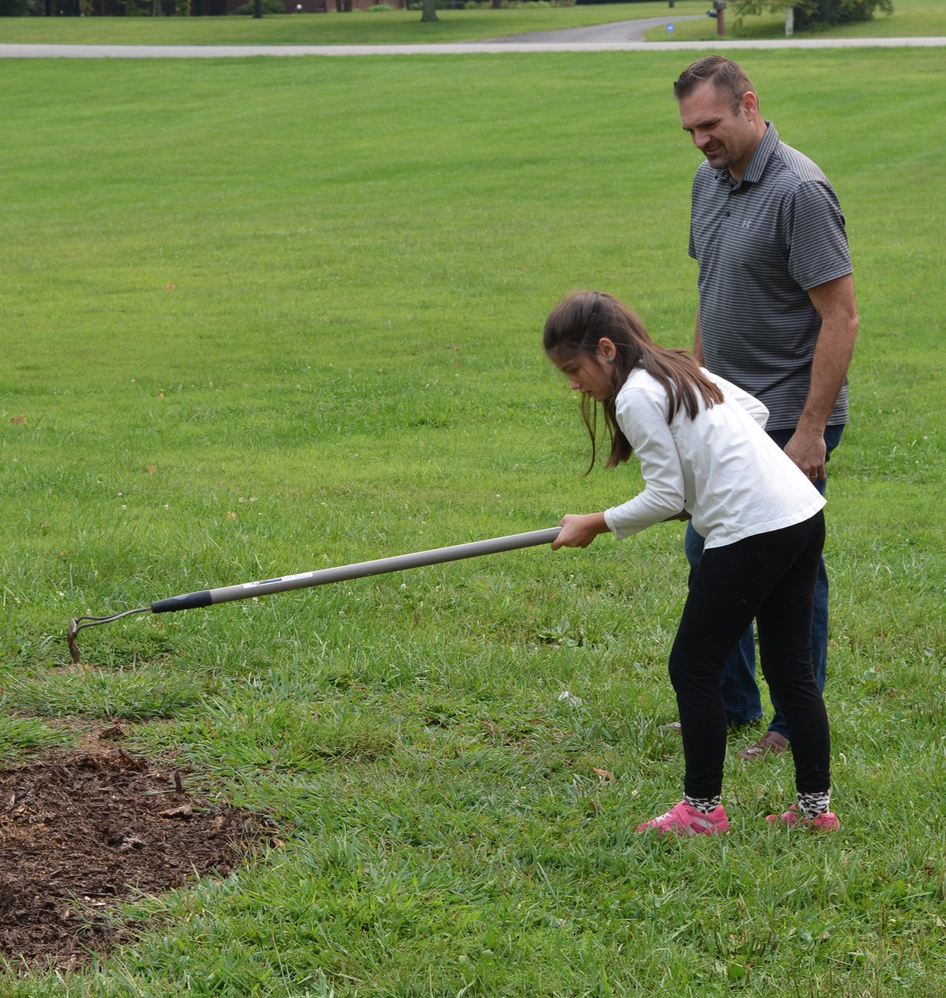
After raking the soil, we scattered the seed. Aren’t seeds beautiful? It’s still amazing to me that grass will grow from these little seeds. And I am looking forward to that bare spot in our yard being gone before we know it!
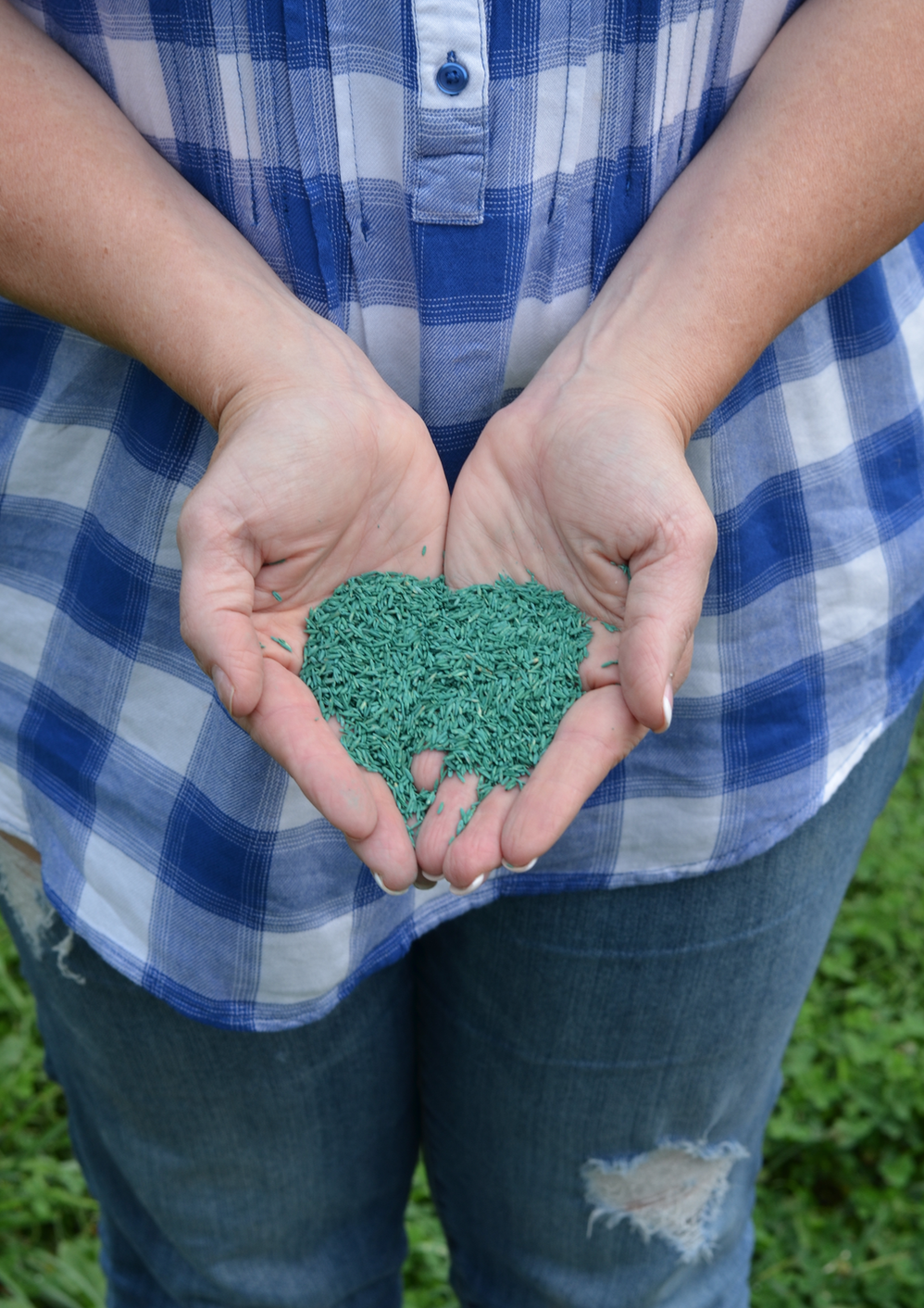
Here are some helpful fall lawn care tips from We Seed America…
Fall Lawn Care Tips
- Fall is a great time to seed! After this very hot and dry summer a well-used lawn may have thinned out considerably. If you have thin or bare areas in your lawn consider the below recommendations:
- Prep the soil in bare areas using a straight rake. The objective is to remove dead organic matter and fluff the top ½ inch of soil.
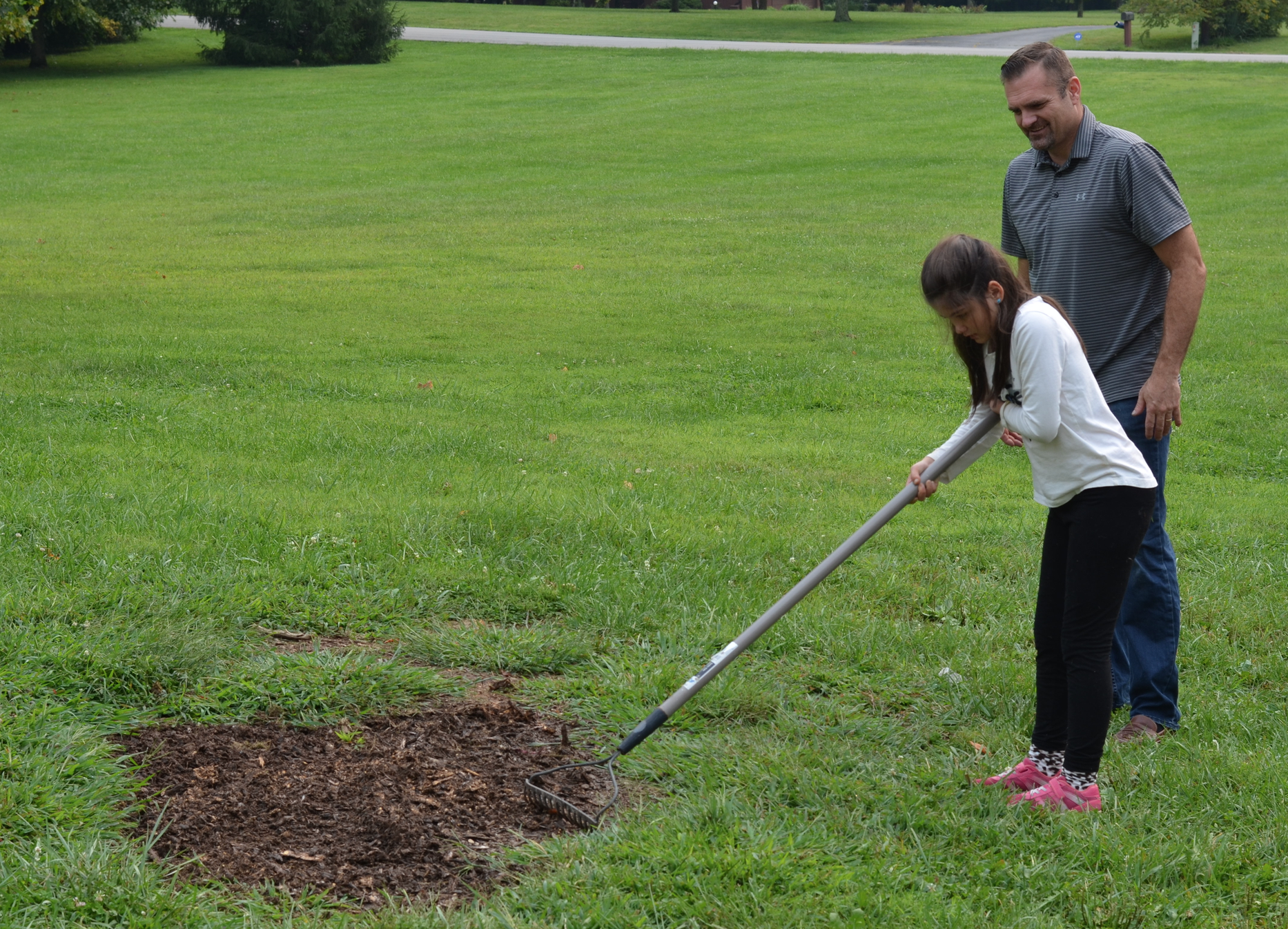
- Prep the soil in bare areas using a straight rake. The objective is to remove dead organic matter and fluff the top ½ inch of soil.
-
- Consult a local gardener to determine if applying a lawn fertilizer is appropriate in your region. Most cool season grasses respond well to three primary nutrients: nitrogen, phosphorus and potassium. For instance, a product with a ratio of 26-7-14 would work well.
- Apply seed. If you have a sunny lawn with irrigation use perennial ryegrass. If you have a sunny lawn without irrigation use tall fescue. If you have a shady lawn use fine fescue. If your lawn is a mix of sun and shade, use a mixture of perennial ryegrass and fine fescue.
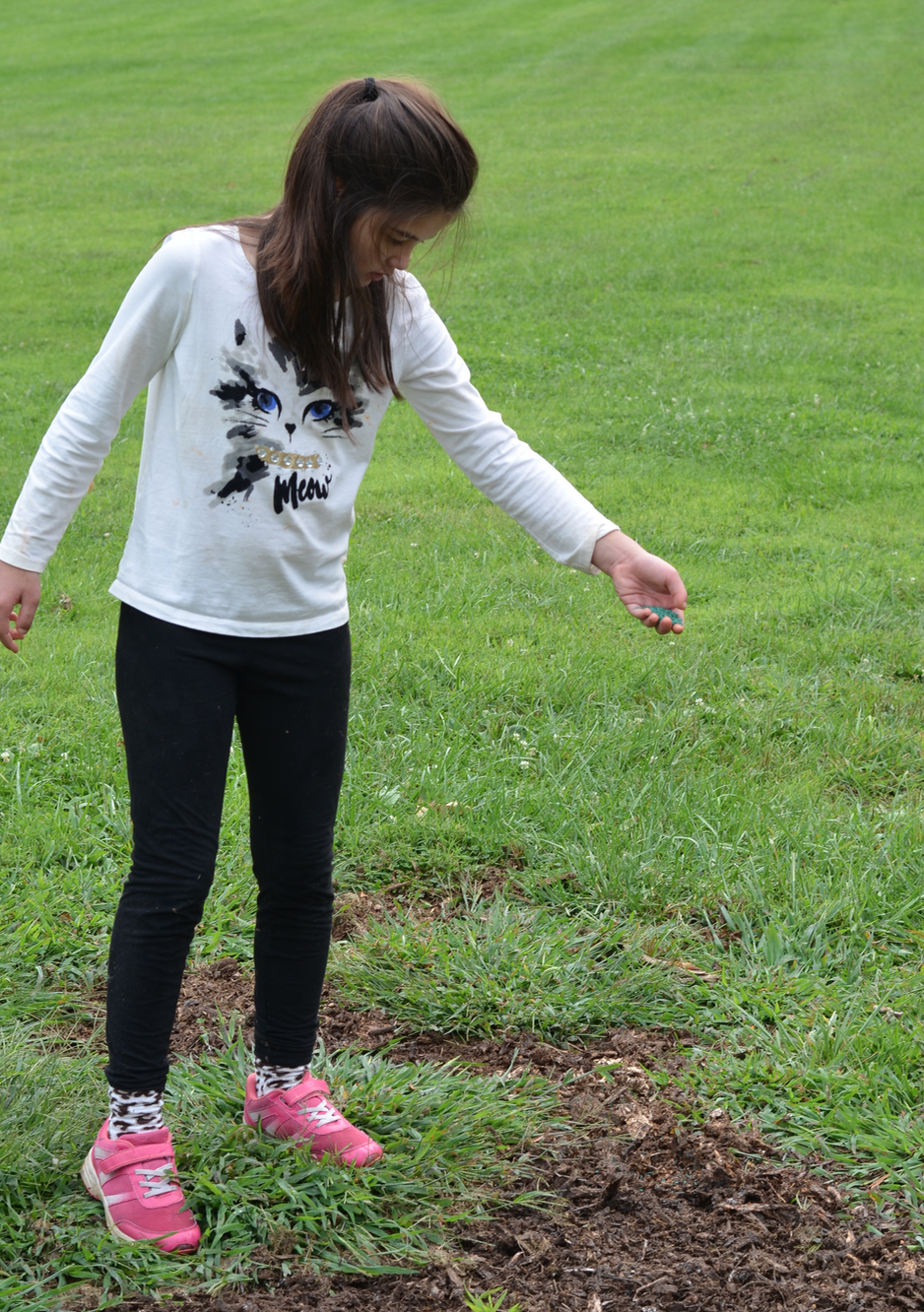
- Pick grass seed that has tested well in your area. Talk to your state agriculture school or gardener to figure the right seed for your lawn.
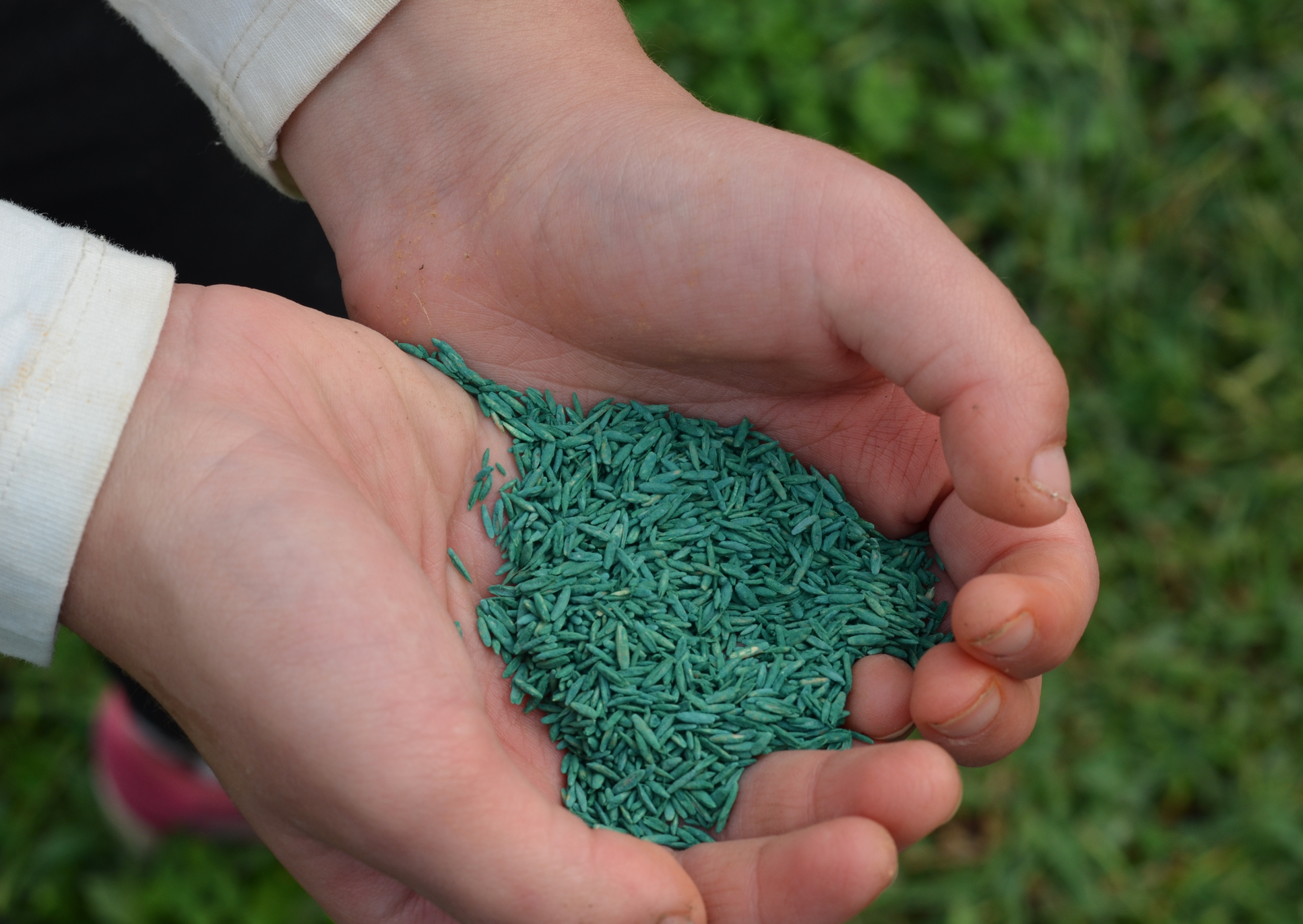
- No one type of grass is best suited to all situations. Avoid the trap of letting personal preference and the costs of establishment become the overriding factors in selecting a grass. Your choice of a lawn grass should be based on climate, sustainability, intended use and desired appearance.
- It is important to purchase quality grass seed. Make sure the seed was tested in the last six months and check that the germination rate is 85 percent or better
- Have your soil tested. A soil analysis is inexpensive and provides important information about nutrient levels and soil type. Liming, fertilizing and seed selection may all depend on the results of a soil analysis.
- Fall is also a great time for aerification or core cultivation. I would suggest using hollow tine core cultivation, pulling small core out of the soil. After you are finished you can top dress with soil, compost or even sand at a ¼ inch depth
- In the fall, ¼ to ½ inch per week of water (via rainfall or irrigation) is generally sufficient to meet the turf’s needs.
Did you know?
- Grass is one of the most efficient and inexpensive ways to prevent erosion caused by wind and water. A thick lawn absorbs rainfall, virtually eliminating any runoff, and the extensive root systems of the individual grass plants bind the soil more effectively than many other ground covers.
- A lawn is naturally self-repairing. If you choose the right grass for your climate conditions and lawn use patterns, it will be highly resilient and regenerate quickly in response to stresses such as drought, frost or foot traffic.

Wow! Sania Louise has grown so much!
I love a beautiful lawn🙂. So sweet to see Sania wanting to help and learn.